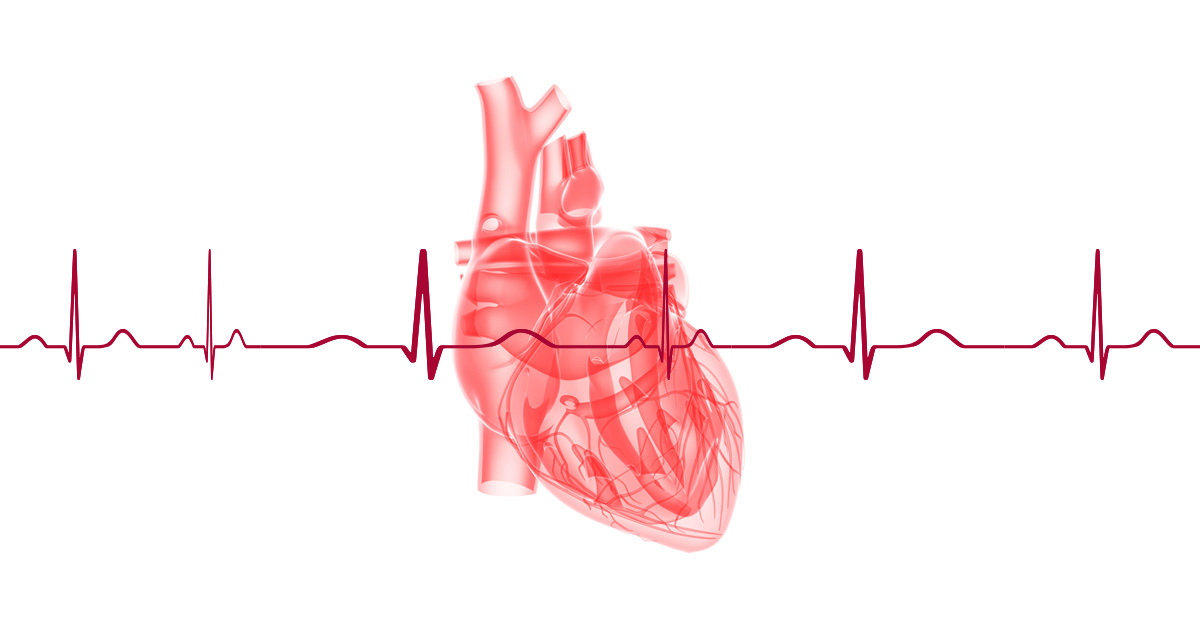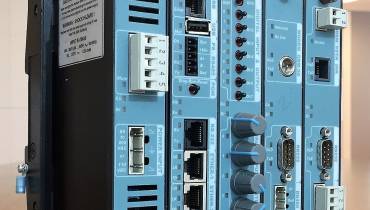Caring for Patients With Heart Rhythm Disorders: What You Should Know

Many people live with medical conditions that affect their heart rhythm. Approximately one in 18 people, or 5% of the U.S. population, has heart rhythm problems called arrhythmias.
Since different heart rhythm disorders require particular treatments, understanding the underlying pathology, treatment methods, risks, and complications is paramount
Caregivers must be alert to specific signs and symptoms associated with a patient who has abnormal heart rhythms.
What Are Heart Rhythm Disorders?
Heart rhythm disorders include a few specific cardiac diseases and conditions. Each has a pronounced effect on the pumping action of a patient’s heart. The conditions include abnormal heart rhythms, in which the heart beats erratically, too quickly, or too slowly.
Most of these disorders originate in the electrical signals that regulate the pace, regularity, and rhythm of the heart. Not all of these conditions result in apparent symptoms or signs of distress. Therefore, it’s imperative to understand heart rhythm disorders and how doctors care for patients with them.
Common Heart Rhythm Disorders
Some common heart rhythm disorders, categorized by type, include:
Tachyarrhythmias
- Supraventricular tachycardia (SVT)
- Atrial flutter
- Atrial fibrillation (AFib)
Bradyarrhythmias
- Sinus bradycardia
- Bradycardia resulting from heart blocks
- Escape mechanisms
Heart Blocks
- First-degree AV block
- Second-degree AV block (type 1)
- Second-degree AV block (type 2)
- Complete heart block
- Sinus bradycardia
Pulseless Rhythms
- Asystole
- Pulseless electrical activity (PEA)
- Ventricular fibrillation
- Pulseless ventricular tachycardia
Basics of Treating Cardiac Arrhythmias
An essential step in treating any heart rhythm disorder is initial detection of symptoms. For healthcare providers, that often comes in the form of a pulse check. A bounding, racing, or irregular heartbeat is detectable by manually feeling for a pulse at various places on a patient’s body. The most common initial site is at the radial artery, on the inside of a person’s wrist.
A cardiac monitor has electrodes that go beyond a simple manual pulse check. Carried by paramedics and EMTs in the field and a regular feature of doctor’s offices, a cardiac monitor can perform an echocardiogram (EKG or ECG). This monitor uses a series of electrodes on a patient’s skin. It captures a detailed reading of the electrical impulses that govern the patient’s heart rhythm. The healthcare provider can analyze the resulting waveforms to detect anomalies. Some monitors can even detect abnormal heart rhythms automatically.

The waveforms have landmarks that can help providers understand and describe what’s happening. These landmarks, often referred to by PQRST labels, are easily detectable and are essential for communicating the issue at hand.
For example, an ST-elevation myocardial infarction is a specific type of heart attack. The waveform on an EKG demonstrates an elevated line between the S and T landmarks in the waveform, hence the name. For certain patients, there might be a weak P-wave. For others, the EKG may be normal, but their pulse rate is too high or too low.
Identifying cardiac rhythms is an essential skill for healthcare providers, as well as an integral part of the skills required for Advanced Cardiac Life Support (ALCS) certification.
Common Cardiac Arrhythmia Treatments
Most heart arrhythmias fall into one of two categories: Tachycardia is when the heart beats too fast, and bradycardia is when the heart beats too slowly.
In those two large categories, there are specific cardiac issues that receive a variety of treatments. Before looking at any of these in detail, here’s a quick summary of some of the most common treatments for patients with heart rhythm disorders.
I. Medications
It may take a bit of trial and error to find the best medication or cocktail of drugs for each patient. The most common medications used to treat arrhythmias are calcium-channel- and beta-blockers. These medications limit the strength of the erratic electrical impulses that are creating an arrhythmia.
Heart arrhythmias can increase the risk of other health threats, so there are also other medications a doctor may prescribe in addition to those that treat the arrhythmia directly.
In some extreme cases (such as asystole) vasoconstrictors like epinephrine may be used to try and increase blood flow to the brain.
In cases where the heart’s AV node is causing bradycardia and poor perfusion, a patient may receive medications like atropine that help restore a normal rhythm and provide proper blood flow and oxygen to the body.
Some heart rhythm disorders, like atrial fibrillation, increase the risk of other health complications. A physician may prescribe other drugs to help improve the effectiveness of treatments or to limit the risk of other health complications. Some examples include:
- Diuretics: Medications used to help decrease the amount of water in the body, thereby lowering blood pressure.
- Blood thinners: A class of medications that decrease the blood’s ability to clot and therefore lower the risk of ischemic stroke.
II. Cardioversion Procedures
Doctors will use a combination of drugs and electrical stimulation to stop the heart from beating entirely. They’ll then use a defibrillator to restart the heart’s electrical impulses and normal sinus rhythm, hopefully knocking out the arrhythmia completely.
III. Ablation Procedures
This relatively common treatment uses heat or cold to destroy the source of the arrhythmic electrical impulses. The rest of the heart’s electrical system remains intact and takes over the regulation of the heart rate.
IV. Pacing
Pacing uses electrical stimulus, often from an external defibrillator, to regulate the rate of a patient’s heartbeat.
In extremis, a paramedic in the field may use transcutaneous pacing (TCP) via electrodes on the patient’s skin to maintain a life-sustaining heart rhythm. However, this is primarily a bridge treatment until a patient can receive more comprehensive care within a hospital setting.
TCP can be pretty painful for the patient, so the procedure requires sedation. This is not sustainable, so a surgeon may implant an internal pacemaker (sometimes in tandem with an internal defibrillator) to help stave off arrhythmias and defibrillate the heart without external input.
Treatment of Specific Arrhythmias
Since each heart rhythm disorder has varying pathologies, risk factors, and presentations, they require very specific courses of treatment.
1. Atrial Fibrillation and Other Tachycardia
Atrial fibrillation, or AFib, is the most common arrhythmia condition treated by professionals. Millions of Americans suffer from this disorder, where the electrical signals governing the heart’s atria become chaotic.
The result is that the patient’s heart rhythm becomes tachycardic (over 100 beats per minute), erratic, or irregular (under 50 beats per minute). Sometimes, all three conditions may occur. Many patients don’t even realize their heart rate is changing. The diagnosis often occurs as the result of a stress test or other heart monitoring, like an EKG during a stress test.
However, despite often not feeling the symptoms, AFib creates a condition where the blood does not flow properly through the heart’s chambers, leading to pooling and potential clotting. This potential for clotting creates an increased risk of ischemic stroke.
Accordingly, doctors treat AFib through many escalating attempts to correct the dysrhythmia. The first line of attack usually employs prescription medications to defeat the arrhythmia by minimizing or blocking the errant electrical signals.
Sometimes, medications are enough to stop the arrhythmia. But, often, the patient will undergo a procedure called cardioversion. If these initial steps don’t work, the patient may undergo an ablation procedure.
The patient will usually receive a prophylactic prescription for anti-coagulants that will help prevent strokes alongside AFib treatment. They may also continue to take medications to prevent the return of an arrhythmic electrical impulse.
The treatment of SVT is very similar to that of AFib, but it’s often more emergent. Using the ALCS algorithm, the healthcare provider will assess the patient’s presentation and determine if they need pacing, medication administration, and/or supplemental oxygen treatment.
Vagal maneuvers may also help stimulate the parasympathetic nervous system to slow the development of impulses from the AV node of the heart.
2. Heart Blocks
Heart blocks don’t often result in detectable symptoms. Their initial detection usually occurs during an EKG. The clinician will see an increased interval between the P and R waves. As the disorder progresses, the symptoms can become more detectable and even life-threatening.
Following the ALCS algorithm, healthcare providers will determine if the heart block requires treatment. If it does, the first step is usually the administration of medications that increase heart rate. This helps maintain adequate perfusion of oxygen to the body’s tissues.
When medications aren’t enough, TCP is the common course of treatment in prehospital settings. In-hospital providers then determine whether an implantable device is necessary.
3. Asystole and PEA
Of all the classifications of arrhythmia, asystole is among the most dire. Along with pulseless electrical activity, these are emergencies where the patient’s life is in grave danger. Their heart is not moving enough blood to sustain life, and in fact may not be beating at all.
The course of treatment may start with cardiopulmonary resuscitation (CPR), ventilation, and the administration of vasoconstricting drugs. Using an EKG in tandem with these emergency procedures can help determine the best course of treatment and the efficacy of ongoing care.
In Conclusion
For healthcare providers who want to assist patients with cardiac arrhythmias, the best first step is to improve their knowledge of advanced cardiac life support algorithms and procedures. This education is often a requirement to work as a paramedic, internist, or physician in an emergency setting.
And for ordinary folks, it’s important that we all stay alert to the signs and symptoms of cardiac arrhythmias. Seek immediate medical attention from a qualified medical practitioner should you notice you have irregular heart rhythms or suspect you are having arrhythmias.




















